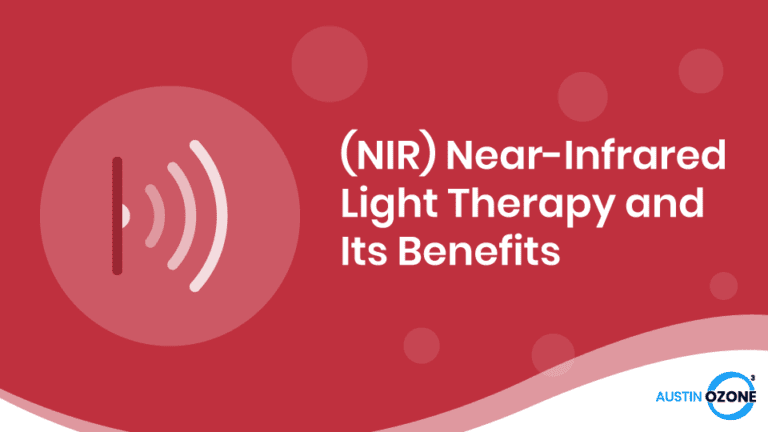The study of photobiomodulation (PBM) started from scientists’ desire to harness light for medical treatment purposes.
PBM is the use of visible to near-infrared spectrum light in causing biochemical changes on the target cells. The spectrum of required light energy in PBM is low to avoid potential tissue burn and damage.
Although the treatment uses light, the change occurs at the chemical level of cells. It induces biological reactions that range from triggering neuroprotective responses to reducing oxidative stress.
An Overview of Transcranial Photobiomodulation
The biological effects1 of PBM have been extensively studied since its accidental discovery in 1967 by Endre Mester. One such potential is its ability to improve brain function and repair damaged peripheral nerves that cause brain disorders in human beings. This potential is called transcranial photobiomodulation.
At present, research for this treatment is still at its infancy. Data gathered mostly demonstrates its positive effects on animal models, particularly mice. However, the results are very promising, with a strong indication that transcranial photobiomodulation can be used as treatment for a broad range of neurological diseases.
What Is Transcranial Photobiomodulation?
Transcranial photobiomodulation is a unique application of PBM that relies on near-infrared light (NIR) to stimulate, regenerate, and preserve brain cells and tissues. In other words, it is a novel, painless, non-invasive treatment for neuroenhancement and the promotion of brain wellness.
NIR is commonly used in transcranial photobiomodulation since it is the only light spectrum that can penetrate deeply enough into the brain and stimulate the desired biological effects
NIR is commonly used in transcranial photobiomodulation since it is the only light spectrum that can penetrate deeply enough into the brain and stimulate the desired biological effects.
Many clinical and experimental studies conducted around the world have proven its effectiveness in treating various neurological and psychiatric illnesses such as dementia, major depressive disorder, Alzheimer’s, post-traumatic disorder (PTSD), and traumatic brain injury among others.
Other studies aim to discover its potential to improve the brain’s cognitive acuity. One study in the University of Texas2 showed that healthy volunteers dosed with NIR light were able to react faster and perform better at memory tests.
Where Should the Light Source Be Placed?
Just like normal PBM, the light source must be placed in contact with the affected area, specifically the head. However, the best place to put the light source is where no hair is present. This is because hair can act as an added obstacle in the transcranial PBM’s penetration into the brain.
For most transcranial photobiomodulation treatments, the light source is usually placed on the forehead where the frontal lobe is located. The frontal lobe is responsible for memory, language, problem solving, and the motor functions of the brain.
However, if you want to address a particular illness or brain disorder, you need to specifically target that area of the brain.
For example, an experiment in Russia that studied Alzheimer’s disease found that they need to thread a fiber optic from the femoral artery to the middle cerebral artery to deliver light to that specific area. The same conclusion was reached by a laboratory in Australia where they also needed to implant fiber optic into a mouse’s brain to deliver light to the brain area that is responsible for Parkinson’s disease.
General Procedure for Transcranial Photobiomodulation
Depending on the illness or disorder, transcranial photobiomodulation involves placing a light source or multiple light sources on areas of the head to stimulate that certain part of the brain.
There are two types of light: pulsing and continuous. Although both can be used in the transcranial photobiomodulation therapy, it was noted that pulsing light delivers better results than a continuous one.
The light source can either be a laser or a light emitting diode (LED), with important consideration on the wavelength. Using the right wavelength is almost similar to taking medicine at the right dosage.
Aside from wavelength, irradiance or power density is another factor to consider. Irradiance is defined as the power of a light source (in Watts) divided by the area covered by the light. Additionally, the duration and frequency of the treatment should be taken into consideration.
Can Light Really Penetrate the Brain?
Under normal PBM, the light source is directly in contact with the affected area. The procedure requires that light penetrate the scalp and skull to be effective. With Transcranial photobiomodulation, light sources are placed on multiple areas of the head, using the prescribed light wavelength.
According to those who are working in the field of tissue optics, different wavelengths of light4 can interact with distinctive types of tissues differently.
Functional NIR with a wavelength ranging from 700 to 900 nanometers (nm) have already been established as a brain imaging technique that is almost comparable to functional magnetic.
Using human cadavers, researchers found that light penetration depends on the anatomical region of the skull. Some studies showed that using a wavelength of 808 nm is best, as it can penetrate the brain up to around 40 to 50 mm in depth10.
Schedule a Transcranial PBM Therapy Session Today!
What Is the Molecular Mechanism for Transcranial Photobiomodulation?
PBM works in three discrete mechanisms: within the cell, at the cell membrane, and outside the cell. The mechanism involved in transcranial photobiomodulation is the absorption of light or photons in the cytochrome C oxidase (Cox), which is found inside the mitochondria. Cox is the terminal enzyme that mediates the transfer of electrons across the inner membrane of the mitochondria.
According to multiple studies, the Cox can be activated by light in the NIR spectrum. This exposure to light provokes an increase in the availability of electrons, which in turn increases the mitochondrial potential. It does so through a series of redox reactions to molecular oxygen. The chemical reaction results in increased levels of adenosine triphosphate (ATP), which signals a heightened cellular metabolism.
Further experiments conducted on the brains of mice suggest that transcranial photobiomodulation has helped improve the rodent’s memory and learning.
This action results in the activation of ion channels and signal pathways that increase the regulation of transcription factors and expression of protective genes. Further experiments5 conducted on the brains of mice suggest that transcranial photobiomodulation has helped improve the rodent’s memory and learning.
What Are the Potential Benefits of Transcranial Photobiomodulation?
Increased Levels of ATP
The increased levels of ATP and its effect on cellular metabolism6 is one of the most recognizable effects of transcranial photobiomodulation. Data on neurological conditions like Parkinson’s and Alzheimer’s disease, traumatic brain injury, and major depressive disorder have shown that low ATP production is the common factor for these diseases.
Improves Blood Circulation
Another potential benefit of transcranial photobiomodulation is its ability to trigger vasodilation or the process of widening the blood vessels, leading to better blood circulation and cerebral oxygenation.
The light stimulates the soluble guanylate cyclase to activate the protein kinase G and the opening of calcium-activated potassium channels. The subsequent fall of calcium ions prevents the myosin light-chain kinase from phosphorylating, causing the blood vessels to relax and widen.
Prevents Cell Death
Transcranial photobiomodulation is also suspected of stimulating neuroprotection from future damage and ensuring longevity. Studies show that light activates protein kinase B and inhibits the activity of glycogen synthase kinase.
This allows the accumulation and translocation of β-catenin, which then increases the activity of TCF/LEF transcription factors that promote cell survival. Moreover, the inhibition of glycogen synthase kinase helps prevent cell death or apoptosis by cutting off the communication between the proteins that trigger or stimulate it.
Protects the Brain Cells
Transcranial photobiomodulation was found to protect brain cells from the harmful effects of toxins. Experimental data on rodents showed that irradiating the cell as a pre-treatment reduces the lethal effects of toxins like potassium cyanide and tetrodotoxin.
Summary
Although clinical studies on transcranial photobiomodulation are still being conducted, the experimental data gathered on animal models showed very promising and interesting results. Although broader clinical trials on the effects of transcranial photobiomodulation on various brain disorders are still in order, the few that are in the preliminary phase also showed positive results.
There are no documented reports of injuries or side effects on patients involved in the clinical studies. Perhaps, it is time for academics, scientists, and sponsors to devote a significant amount of funding and research to further explore the potential of transcranial photobiomodulation . After all, the existing medicines and treatments are all found to be lacking, and in some cases, can even lead to serious health complications.
The low cost of LEDs, along with the positive results of transcranial PBM and its lack of side-effects should be enough to convince the scientific community to look at it as a serious medical alternative for addressing various psychiatric and neurological disorders.
Schedule an Appointment Today
References
- Carneiro, A., Poiani, G., Zaninnoto, A., Osorio, R., Oliveira, M., Paiva, W., & Zângaro, R. (2019). Transcranial photobiomodulation therapy in the cognitive rehabilitation of patients with cranioencephalic trauma. Photobiomodulation, Photomedicine, and Laser Surgery, 37(10). https://doi.org/10.1089/photob.2019.4683
- Cassano, P., Petrie, S., Hamblin, M., Henderson, T., & Iosifescu, D. (2016). Review of transcranial photobiomodulation for major depressive disorder: Targeting brain metabolism, inflammation, oxidative stress, and neurogenesis. Neurophotonics, 3(3), 031404. doi: 10.1117/1.NPh.3.3.031404
- Clinical Trials. (2020, October 9). Transcranial photobiomodulation therapy for the treatment of autistic traits in children and adolescents with ADHD. Retrieved from https://clinicaltrials.gov/ct2/show/NCT04569058
- Hamilton, C., Hamilton, D., Nicklason, F., & Mitrofanis, J. (2019). Chapter 33 – Transcranial photobiomodulation therapy: Observations from four movement disorder patients. In M. R.-Y. Huang, Photobiomodulation in the Brain: Low-Level Laser (Light) therapy in neurology and neuroscience (pp. 463-472). Boston, MA: Elsevier.
- Holmes, E., Barrett, D., Saucedo, C., O’Connor, P., Liu, H., & Gonzalez-Lima, F. (2019). Cognitive enhancement by transcranial photobiomodulation is associated with cerebrovascular oxygenation of the prefrontal cortex. Frontiers in Neuroscience, 13, 1129. doi: 10.3389/fnins.2019.01129
- Pruitt, T., Wang, X., Wu, A., Kallioniemi, E., Husain, M., & Liu, H. (2020). Transcranial Photobiomodulation (tPBM) with 1,064‐nm laser to improve cerebral metabolism of the human brain in vivo. Lasers in Surgery and Medicine, 52, 807–813. https://doi.org/10.1002/lsm.23232
- Rasta, F., & Hossein, S. (2017). The potential of transcranial photobiomodulation therapy for treatment of major depressive disorder. Reviews in the Neurosciences, 28(4):441-453. doi: 10.1515/revneuro-2016-0087
- Vie Light. (n.d.). Transcranial photobiomodulation. Retrieved from https://vielight.com/category/photobiomodulation/transcranial-photobiomodulation/?sfw=pass1605425424
- Yuan, Y., Cassano, P., Pias, M., & Fang, Q. (2020). Transcranial photobiomodulation with near-infrared light from childhood to elderliness: simulation of dosimetry. Neurophotonics, 7(1), 15009.https://doi.org/10.1117/1.NPh.7.1.015009
- Zomorrodi, R., Loheswaran, G., Pushparaj, A., & Lim, L. (2019). Pulsed near infrared transcranial and intranasal photobiomodulation significantly modulates neural oscillations: A pilot exploratory study. Scientific Reports, 9(6309). https://doi.org/10.1038/s41598-019-42693-x






